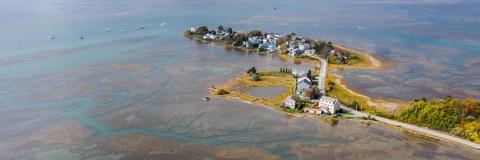
New Hampshire Sea Grant is launching six new research projects focusing on expanding our understanding of New Hampshire’s marine environment, building resilient coastal communities and economies, promoting healthy coastal ecosystems, and improving environmental literacy. The expected two-year funded 2022-2023 research projects will be led by scientists from New Hampshire institutions and will incorporate outreach and education efforts as critical components of their plans. The projects represent a research investment of $1.4 million from the National Oceanic and Atmospheric Administration and other non-federal matching funds.
Read below to learn about each project and what they mean for New Hampshire.
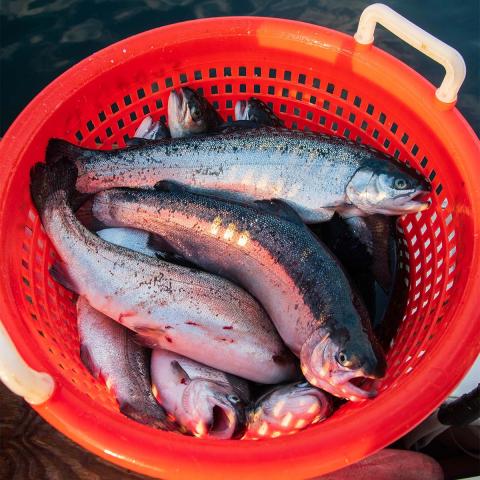
Development and evaluation of a culturally tailored online nutrition education program targeting fish consumption among Hispanic adults
Sherman Bigornia – University of New Hampshire
Though we know eating fish is a healthy choice– it’s even included in the US Dietary Guidelines – but programs promoting healthy eating for disadvantaged and low-income populations often leave fish out of their guidelines. The Hispanic community is the largest and fastest growing racial/ethnic group in New Hampshire but also the second largest group living in poverty and disproportionately affected by chronic disease and other diet related risks. The Hispanic community may therefore widely benefit from eating more fish. To address this gap, Sherman Bigornia, assistant professor in the Department of Agriculture, Nutrition, and Food Systems at UNH, and partners will develop an online nutrition program based on narrative communication for behavior change to encourage low-income Hispanic adults in New Hampshire to eat fish. Their project, based on focus groups and interviews with key informants, will determine how best to reach the Hispanic community in New Hampshire. They will also make the curriculum available to other regions and communities to promote healthy diets and support fisheries across the country.
Collaborators:
Amy Hollar – Healthy Living State Specialist, UNH Cooperative Extension
Sabrina Noel – Assistant Professor, University of Massachusetts Lowell
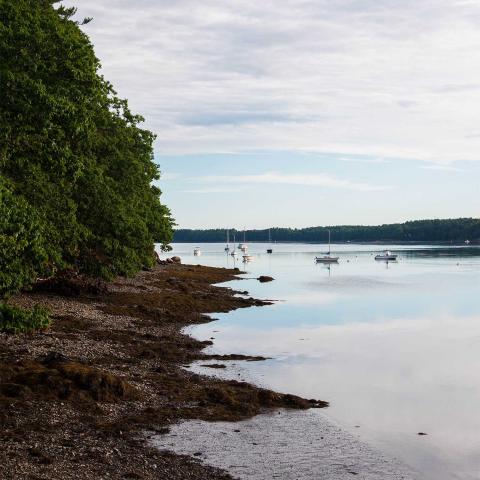
Factors influencing PFAS bioaccumulation and biomagnification in marine food webs associated with AFFF sources in a New England estuary
Celia Chen – Dartmouth College
Attention and concern have increasingly grown around PFAS – perfluoroalkyl substances – a type of chemical used in consumer products like non-stick cookware, food containers, textiles, and industrial surfactants. These products can have adverse health impacts in people and many are already present in the environment. In New Hampshire, PFAS are found in the Great Bay estuary – introduced from the former Pease Air Force Base and nearby landfills. How these compounds build up and are transferred between animals in a food web is still unclear, and so the risk to humans through seafood is not well known. To help answer this growing question, Celia Chen from Dartmouth College will be assessing levels of PFAS in Great Bay wildlife and measuring transfer of PFAS in laboratory experiments with organisms across the food web, from plankton to fish. Chen’s research will help us understand the risk of PFAS exposure through eating seafood from places like Great Bay.
Collaborators:
Thomas Holsen – Jean S. Newell Distinguished Professor of Engineering, Clarkson University
Sujan Fernando – Research Assistant Professor, Clarkson University
Jonathan Petali – Toxicologist for the Environmental Health Program, NH Department of Environmental Services
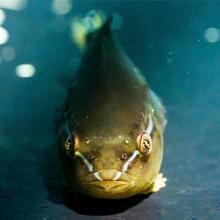
Team LuMP — Lumpfish Mapping Project
Elizabeth Fairchild – University of New Hampshire
The Gulf of Maine is one of the fastest warming parts of the world’s oceans. We’re already seeing shifts in the range of some marine species like Black Sea Bass. One unique species that is expected to shift as waters warm is the lumpfish – a small “cleaner fish” that is increasingly used in aquaculture overseas as a natural solution to parasites on fish like salmon. In the US, Lumpfish have never been harvested, so any shift in population is likely related to climate change. Lumpfish distribution in the Gulf of Maine have already changed, but we don’t understand exactly why.
As US finfish aquaculture operations grow, lumpfish may be used as a solution for parasites and therefore be harvested. Baseline data on a potential fishery is vital information for future managers, fishermen, and conservationists. Therefore, a team led by Elizabeth Fairchild at the University of New Hampshire will lead a project to describe and map the range of lumpfish in the Gulf of Maine. They’ll create an online interactive map to share their findings with fisheries professionals, other researchers, and the public to understand this dynamic little fish.
Collaborators:
Easton White – Assistant Professor, University of New Hampshire
Shane Bradt – Associate Extension Specialist, UNH Cooperative Extension
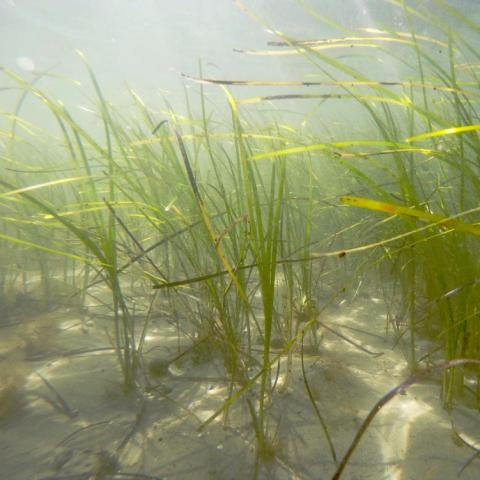
What ‘goes with the flow’? Linking Zostera marina reproduction and genetic diversity with oceanographic drivers in Great Bay Estuary
Cynthia Hays – Keene State College
Eelgrass and other seagrasses are vital to an estuary as foundation species that interact with currents to create areas of calmer water for a wide variety of fish, birds, and other animals. These currents also affect how the meadows grow. Eelgrass reproduces both clonally like a cutting from a houseplant and sexually through pollen and seeds mixed and carried by the currents. Diversity of an eelgrass meadow is likely dependent on these currents and water conditions. Genetic diversity is important for a population to grow, evolve, and weather stressors like storms or disease. Cynthia Hays of Keene State College will be exploring the links between hydrodynamics, reproduction, and genetic diversity of eelgrass in the Great Bay estuary through molecular genetics, field measurements, and mathematical models. Eelgrass meadows around the world are in decline, and this project will help researchers and managers understand past changes in eelgrass and prepare for the future.
Collaborators:
Tracy Mandel – Assistant Professor, University of New Hampshire
Tom Lippman – Associate Professor, University of New Hampshire
Theresa Oehmke – Postdoctoral Scholar, University of New Hampshire
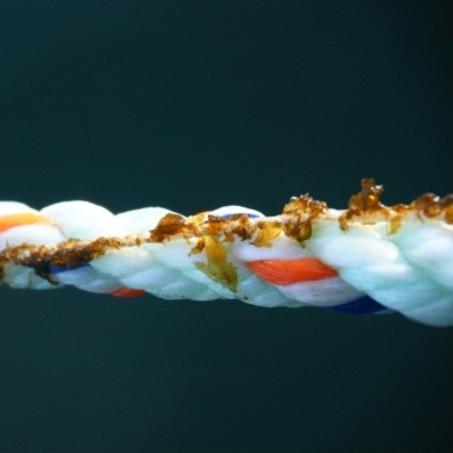
Diversifying the New England Sea Vegetable Aquaculture Industry – Phase II: Line Seeding Technology and Grow-out Trials for Longline Nori Production
Chris Neefus – University of New Hampshire
Seaweed aquaculture has exploded in the Gulf of Maine in the last ten years, with more than 140 kelp farms operating along the coast of Maine and New Hampshire. However, most of these farms depend on a single species – sugar kelp. Chris Neefus of the Department of Biological Sciences at UNH is developing the next sea vegetable for the Gulf of Maine – Wildemania amplissima, a local species of nori – the seaweed used in sushi and produced in a multibillion-dollar industry in Asia. This species grows to a similar size and in similar conditions to sugar kelp, but in spring and early summer instead of sugar kelp’s winter season, diversifying farms’ business without requiring big changes in practices or gear. Neefus will determine how best to seed and grow nori. The project will share its results with Gulf of Maine aquaculture operations in partnership with New Hampshire and Maine Sea Grant extension and outreach teams to help a growing industry become more resilient and profitable.
Collaborators:
Michael Chambers – Research Associate Professor, UNH School of Marine Science and Ocean Engineering, and Aquaculture Extension Specialist, NH Sea Grant and UNH Cooperative Extension
Jaclyn Robidoux – Marine Extension Associate, Maine Sea Grant and University of Maine Cooperative Extension
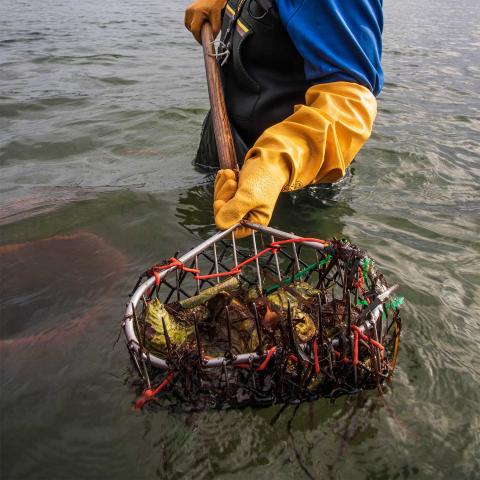
Promoting the sustainability of New Hampshire oyster aquaculture by improving pathogenic Vibrio management tools and contingencies
Cheryl Whistler – University of New Hampshire
Though infections by the bacterium Vibrio parahaemolyticus have increased in the Northeast, New Hampshire and Maine have avoided any Vibrio-linked illness. That could be because of New Hampshire’s groundbreaking policy preventing the import of oyster seed from areas affected by a virulent strain of Vibrio introduced from the Pacific, ST36. However, we don’t know exactly how risky importing seed from these areas is, and farmers could benefit from diversifying seed sources. Therefore, Cheryl Whistler — professor of molecular, cellular, and biomedical science at the University of New Hampshire – will investigate the actual risk of Vibrio contamination through seed transport, explore mitigation measures like salt relay and microbiome resistance, and improve detection of harmful Vibrio strains. Whistler’s work will help New Hampshire aquaculture continue growing, keep its product healthy, and inform future policy protecting New Hampshire waters from Vibrio pathogens.
